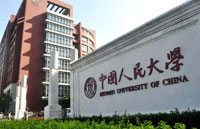Overview of Mulan
Updated: 2016-07-27 16:15The county of Mulan, Heilongjiang province, near Harbin in the northeast, is an important site on the Silk Road Economic Belt. Its connection with Harbin has been strengthened by the completion of the Mulan-Songhuajiang Bridge.
Adjoining the Songhua River and the Xiaoxing'an Mountains, Mulan has a population of 280,000 and covers an area of 3600 square meters. It administers six towns and eighty-six villages. There are thirty reservoirs along the Songhua River in the county and the forest coverage rate is nearly 50 percent. Mulan has been awarded various titles, such as "National Ecological Agricultural County", "National Green Rice Production Base" and "National Rural Tourism Demonstration County".
Mulan is also known for its carpet, rice, coffee and beer products. Located in the black soil area of northeast China, it enjoys distinct seasons, adequate sunlight and moderate rainfall, which contributes to the excellent quality of its crops. Hundreds of kinds of precious herbs grow in the 670,000 hectare forest and the abundant grassland feeds flocks and herds. With the improvement of agricultural infrastructure, Mulan has seen remarkable progress, especially in rice and red meat processing.
With the support of related policies and modern agriculture reform in Heilongjiang, the county has seized all opportunities to construct a grain production base, developing grain processing efficiency and funding a green food industry. It built an 8-square-meter agricultural production park to bring together various agriculture projects for cooperation.
In August, 2014, the Chinese Academy of Agricultural Sciences (CAAS) Grain Processing Technology Institute (Harbin) settled in the industrial park, the first national organization instituted by CAAS in Heilongjiang. It focuses on grain processing, product innovation and inspection services. This move inaugurates a new cooperation method between national research groups and local food industries. For example, Zhang Hong, a CAAS expert, is leading a team working on flexible packaging, group nutrition catering and other food production technologies. Many famous food companies have also set up their factories in Mulan because of its industrial agglomeration.
In future, Mulan plans to expand the market to Russia, North Korea and Japan with the help of the Heilongjiang Silk Road Belt and, in three to five years, become the leading food research center of Northeast Asia. That development would improve Heilongjiang's influence in the area. The government intends to pay more attention to ecological protection and sustainable development under emerging circumstances to create a better Mulan.
- US agrees it's time to 'turn the page'
- Guidelines encourage parents to provide better care
- Victims' families sign settlements
- China backs WHO in implementation of health-related goals: Xi
- China, US vow to boost trust
- Ex-military leader Guo given life in bribery case
- Ministries discuss retirement age, food security
- 'Flying objects' restricted for G20 Summit
- Jobs growing, but applicants are lagging
- Top Chinese economic fugitive to return







